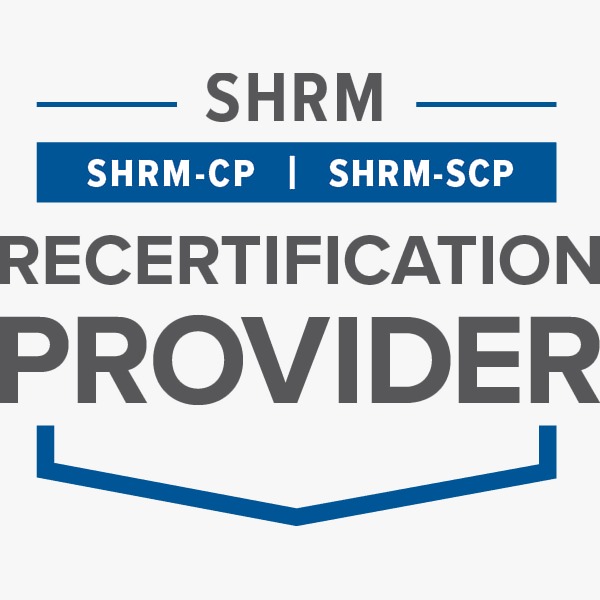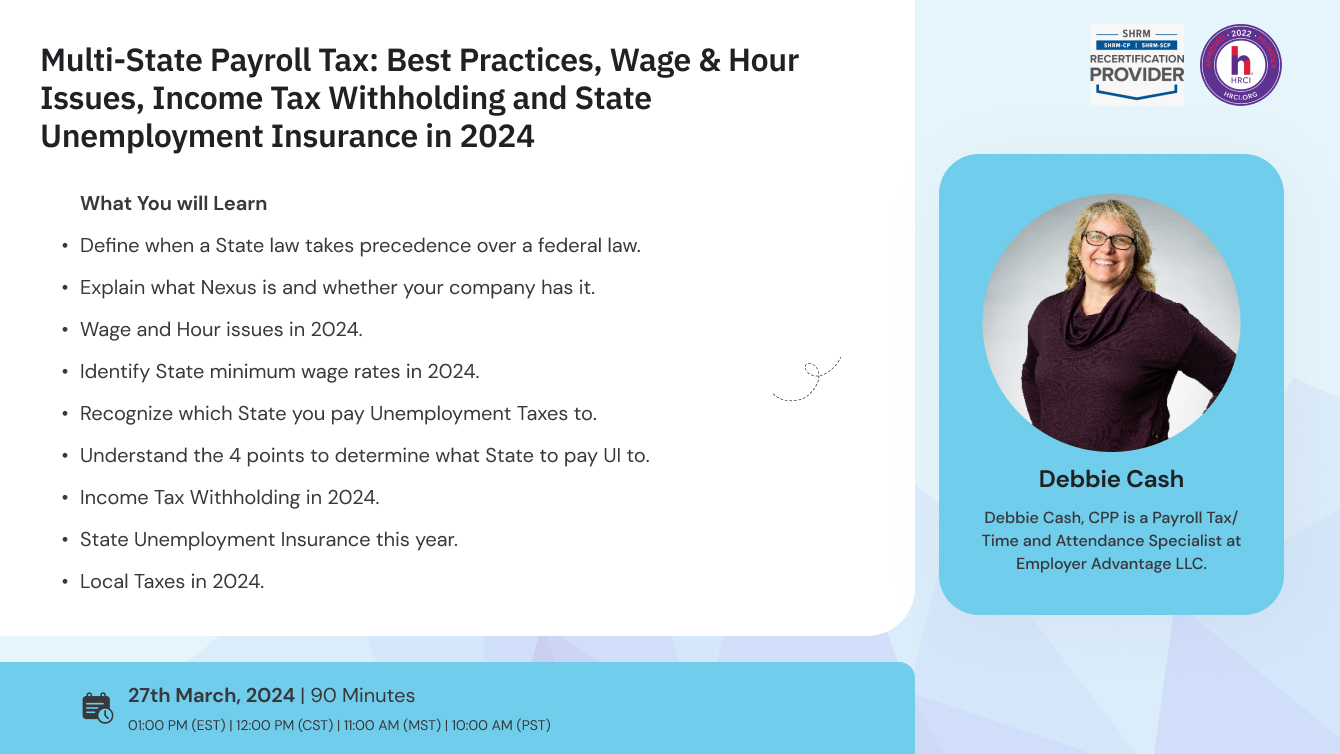Multi-State Payroll in 2024
Many companies who do business in more than one State do not understand how to determine which State they must pay taxes to. They also do not understand that each State has different laws regarding residents and non-residents. This is very difficult to keep up with and to know what taxes to withhold. As you get ready for 2024, this session will give you guidelines on what factors determine which tax the employer must withhold. It will explain the differences of residents and non-residents and how to properly report withholding for both these types of employees. You’ll find out whether your business has Business Nexus and what that means to you. No employer wants to face huge fines and penalties for failing to follow State laws and regulations so this session will help you know if you are compliant and what to change if you are not.
Besides State withholding there are also local taxes in certain areas. Some States have local taxes for larger cities and other have them for every locality. You are responsible for making sure you are properly withholding for these localities and you have to know where and when to pay these taxes. You will be given helpful websites to find out detailed information on withholding for these taxes and where to pay them to.
Employees must be paid at least the federal Minimum Wage. However, there are also State minimum wages and sometimes those amounts are higher than the Federal Minimum wage. Whichever wage is higher is what the employee must be paid. We’ll go over this in detail and discuss how to review this for 2024 to be sure you are in compliance.
When employees work in Multiple States you must determine where their State Unemployment must be paid to. There are guidelines to follow to determine where these taxes are paid. This will be outlined in detail and examples will be given of different scenarios and how to handle them. The material covered in this session will give you the tools necessary to make sure your business remains in compliance with all of these things.
What You will Learn
- Define when a State law takes precedence over a federal law.
- Explain what Nexus is and whether your company has it.
- Wage and Hour issues in 2024.
- Identify State minimum wage rates in 2024.
- Recognize which State you pay Unemployment Taxes to.
- Understand the 4 points to determine what State to pay UI to.
- Income Tax Withholding in 2024.
- State Unemployment Insurance this year.
- Local Taxes in 2024.
Why You Should Attend
If your business has employees who work in different States then this session will help ensure you are paying the proper taxes for Unemployment and Withholding. Are you only withholding and paying payroll taxes for the State you are located in? Many companies don’t even realize that they should be paying taxes to other States or localities. Even if you don’t have a physical presence or location in another State doesn’t mean you aren’t subject to withholding for that State. This is called Business Nexus and you will want to know if your business has it. You will be able to define what Business Nexus is and what is required if you have it.
Multi-State taxes can be very complex and hard to understand. Making sure you are in compliance is difficult. If you are unsure if you are withholding everything you need to withhold then you will want to attend this session. We will cover the fundamentals of the different types of withholdings and unemployment you will need to be aware of. We’ll discuss how to determine which State to withhold taxes for and other things to consider.
When employees work in more than 1 State you may be unsure which State to pay Unemployment to The rules to determine this can be confusing and you may not be aware of how to even make this determination. If an employee terminates and files for unemployment in their home state you run the risk of receiving penalties if you have not filed wages to the correct State for unemployment benefits. You will also get guidance on how to make the correct determination.
Best Practices For You
Many Employers don’t realize they have to pay taxes for the State the employee is working in. There are guidelines to follow in each State and determinations to be made on which State governs for employees working across multiple States.
I go over the 4 factors on how to determine which State the Unemployment should be paid to and how to look at these factors. It is important to do this correctly or fines/penalties can be assessed.
All factors must be considered when dealing with Tax laws and specifically across State lines. Keeping up with these is difficult which is why it’s important to know where to research the laws and regulations and continuing education to keep up with them is key.
Who will Benefit
- Payroll Professionals
- Owners
- Accountants
- CFO
- Tax Professionals
- Bookkeepers
- Businesses who operate in more than 1 State
- Businesses who have employees who work in a different State than where the business location is or employees working in multiple States
- Businesses who sell products over State lines

Debbie Cash
Debbie Cash, CPP is a Business Analyst-Implementation at G&A Partners. She collaborates with Clatid Compliance to provide trainings on payroll and human resources. She was formerly a Payroll Tax/Time and Attendance Specialist at Employer Advantage LLC. G&A Partners is a Professional Employer Organization (PEO) that offers payroll, human resources, benefits management, risk management, and accounting services for businesses and they recently acquired Employer Advantage LLC a former PEO. She has been with the organization since 2006.
Debbie earned an associate's degree in Accounting from MSSU in 1985 and a bachelor's degree in General Business from MSSU in 2006. She obtained her Certified Payroll Professional Certification in October 2006. She has 30+ years of experience processing payroll and payroll taxes for various different companies and professions.
Debbie worked as a Payroll Specialist at Missouri Southern State University from 1993 to March 2006. She attended the International Tax Conference in Wisconsin in 2005 and specialized in International Tax for Student Visa’s. She also worked for Joplin R-8 School District from 1990 to 1993.

SHRM -
StandEagle is recognized by SHRM to offer Professional Development Credits (PDCs) for the SHRM-CPSM or SHRM-SCPSM. This program is valid for 1.5 PDCs for the SHRM-CPSM or SHRM-SCPSM. For more information about certification or recertification, please visit - portal.shrm.org.

HRCI -
This webinar has been approved for 1.5 HR (General) re-certification credit hours toward California, GPHR, HRBP, HRMP, PHR, and SPHR recertification through the HR Certification Institute.
The use of this seal is not an endorsement by the HR Certification Institute of the quality of the activity. It means that this activity has met the HR Certification Institute’s criteria to be pre-approved for re-certification credit.

ACCREDITATIONS


